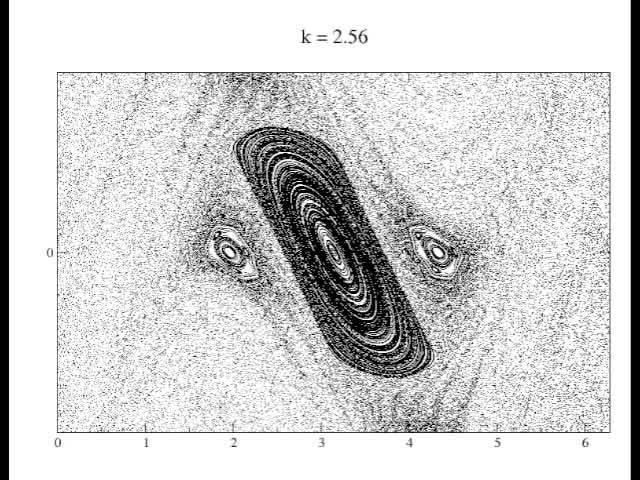 | ||
The standard map (also known as the Chirikov–Taylor map or as the Chirikov standard map) is an area-preserving chaotic map from a square with side
Contents
where
The properties of chaos of the standard map were established by Boris Chirikov in 1969. See more details at Scholarpedia entry.
Physical model
This map describes the Poincaré's surface of section of the motion of a simple mechanical system known as the kicked rotator. The kicked rotator consists of a stick that is free of the gravitational force, which can rotate frictionlessly in a plane around an axis located in one of its tips, and which is periodically kicked on the other tip.
The standard map is a surface of section applied by a stroboscopic projection on the variables of the kicked rotator. The variables
The kicked rotator approximates systems studied in the fields of mechanics of particles, accelerator physics, plasma physics, and solid state physics. For example, circular particle accelerators accelerate particles by applying periodic kicks, as they circulate in the beam tube. Thus, the structure of the beam can be approximated by the kicked rotor. However, this map is interesting from a fundamental point of view in physics and mathematics because it is a very simple model of a conservative system that displays Hamiltonian chaos. It is therefore useful to study the development of chaos in this kind of system.
Main properties
For
Nonlinearity of the map increases with K, and with it the possibility to observe chaotic dynamics for appropriate initial conditions. This is illustrated in the figure, which displays a collection of different orbits allowed to the standard map for various values of
Circle map
The standard map is related to the circle map, which has a single, similar iterated equation:
as compared to
for the standard map, the equations reordered to emphasize similarity. In essence, the circle map forces the momentum to a constant.
